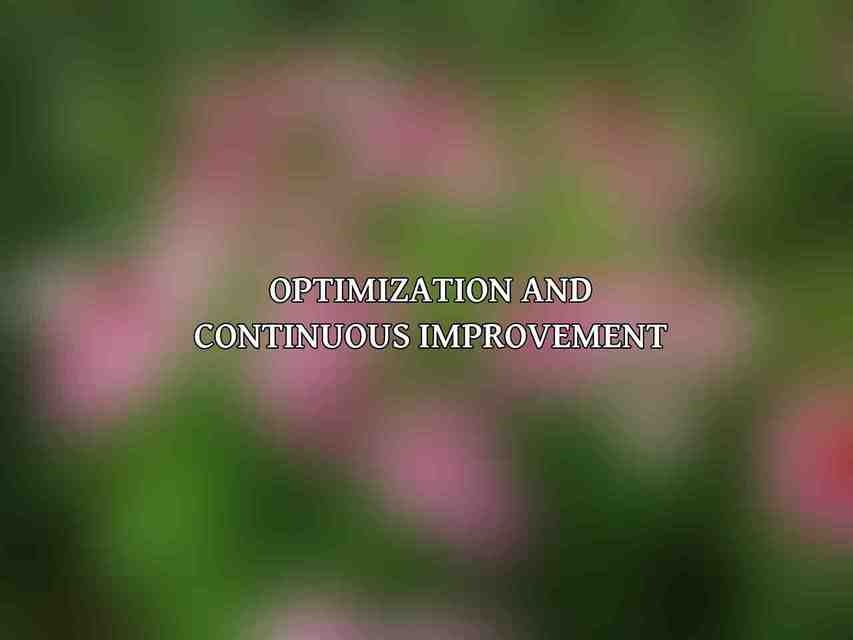When it comes to implementing project management software successfully, proper planning and preparation are key factors that should not be overlooked. This phase involves crucial steps to ensure a smooth transition and effective utilization of the software.
Stakeholder Analysis and Process Assessment
Before diving into selecting software, it’s vital to conduct a stakeholder analysis to identify key players and understand their needs and expectations. Additionally, assessing current processes and workflows helps in pinpointing areas that need improvement.
Define Project Management Needs
Clearly defining your project management needs is essential in selecting software that aligns with your requirements. Whether it’s task management, resource allocation, or collaboration features, outlining what you need from the software sets the foundation for a successful implementation.
Research and Evaluate Software Options
Researching and evaluating different software options are crucial steps in finding the best fit for your organization. This involves creating a vendor comparison matrix, assessing software functionality and features, evaluating integration capabilities with existing systems, and deciding between cloud-based or on-premises deployment based on your infrastructure needs.
Establish Budget and Timeline
Setting a realistic budget and timeline is essential for the entire implementation process. This step helps in managing costs effectively and setting expectations for milestones and project completion.
Software Selection and Procurement
Once the planning phase is complete, the focus shifts to selecting and procuring the project management software that best fits your organization’s needs.
Request for Proposals (RFP)
Issuing a Request for Proposals (RFP) allows you to gather detailed information from potential vendors regarding their offerings. This process helps in comparing different solutions based on your requirements.
Vendor Demonstrations and Proof of Concepts
Vendor demonstrations and proof of concepts provide hands-on experience with the software, allowing you to assess its usability and functionality in a real-world scenario.
Contract Negotiation
Negotiating contracts with selected vendors is crucial to ensure favorable terms and conditions that protect your interests and meet your budget constraints.
Deployment Planning
Proper deployment planning involves strategizing the rollout of the software, considering factors like user adoption, training needs, and integration with existing systems.
Implementation
The implementation phase is where the selected project management software is put into action within your organization.
Infrastructure Installation and Setup
Setting up the necessary infrastructure involves configuring servers, databases, and ensuring network connectivity to support the software’s operations.
| Infrastructure Installation Steps |
|---|
| 1. Server and Database Configuration |
| 2. Network Connectivity |
Data Import and Migration
Migrating data into the new software requires careful planning, including mapping data, creating templates, and validating the import process for accuracy.
| Data Import and Migration Steps |
|---|
| 1. Data Mapping and Template Creation |
| 2. Import Process and Validation |
User Training and Support
Training users on how to effectively utilize the software is crucial for adoption success. Whether through classroom sessions or web-based training, providing users with the necessary resources and support is key.
| User Training and Support Components |
|---|
| 1. Classroom or Web-Based Training |
| 2. User Manuals and Online Help |
| 3. Dedicated Support Team |
Configuration and Customization
Tailoring the software to meet your specific needs involves configuring project templates, defining workflows, implementing role-based access control, and setting up reporting dashboards.
| Configuration and Customization Aspects |
|---|
| 1. Project Templates and Workflows |
| 2. Role-Based Access Control |
| 3. Reporting and Dashboards |
Integration
Integrating the project management software with other applications within your organization is essential for seamless data flow and enhanced productivity.
Integration with Third-Party Applications
Integrating with CRM systems, ERP solutions, and collaboration tools enhances communication and streamlines processes across different platforms.
| Integration with Third-Party Applications |
|---|
| 1. CRM and ERP Systems |
| 2. Collaboration Tools |
Data Synchronization and Automation
Ensuring data synchronization and setting up automation workflows between the project management software and other applications minimize manual tasks and improve overall efficiency.
Optimization and Continuous Improvement

After the initial implementation, focusing on optimizing the software’s performance and continuously improving its usage within the organization is essential for long-term success.
Performance Monitoring and Measurement
Monitoring key performance indicators (KPIs) and setting performance targets help in evaluating the software’s effectiveness and making informed decisions for improvement.
User Feedback and Process Review
Gathering feedback from users through surveys and focus groups allows you to understand user experiences and identify areas for enhancement. Regular updates and improvements based on feedback enhance user satisfaction.
Software Upgrades and Enhancements
Staying current with software upgrades and implementing enhancements ensures that your project management software remains aligned with your organization’s evolving needs and industry trends.
Best Practices

Adhering to best practices throughout the implementation process is crucial for maximizing the benefits of project management software within your organization.
Executive Sponsorship and Support
Having executive sponsorship and support for the project management software implementation communicates its importance and secures resources for successful adoption.
Change Management and Communication
Implementing effective change management strategies and maintaining open communication channels throughout the process foster a culture of acceptance and readiness for software changes.
User Adoption and Training
Prioritizing user adoption through tailored training programs and continuous support ensures that users embrace the software and leverage its full capabilities.
Data and Security Management
Ensuring data integrity and implementing robust security measures safeguard sensitive information and maintain compliance with data protection regulations.
By following these comprehensive steps and best practices, organizations can successfully implement project management software that enhances collaboration, streamlines processes, and drives project success in the dynamic business environment of 2024. Dive deeper into Ultimate Guide to Mastering Project Management
Frequently Asked Questions
What is project management software?
Project management software is a tool designed to help streamline the process of planning, executing, monitoring, and completing projects. It helps teams collaborate, stay organized, and meet project deadlines.
Why is project management software important?
Project management software is important because it provides a centralized platform for project planning, task allocation, progress tracking, and communication. It increases efficiency, reduces mistakes, and improves overall project outcomes. You can find more information on Top 10 Project Management Software for 2024 Reviewed
How do I choose the right project management software for my team?
When choosing project management software, consider your team’s specific needs, budget, and technical expertise. Look for a software that is user-friendly, scalable, customizable, and integrates well with your existing tools.
How can I encourage my team to adopt project management software?
To encourage your team to adopt project management software, provide adequate training and support, demonstrate the benefits of using the software, and involve team members in the decision-making process. Highlight how the software will make their jobs easier and more efficient.
How can I measure the success of implementing project management software?
To measure the success of implementing project management software, track key metrics such as project completion time, task completion rate, team productivity, and customer satisfaction. Conduct surveys and gather feedback from team members to understand their experience with the software. Find more on Compare Project Management Software Features

